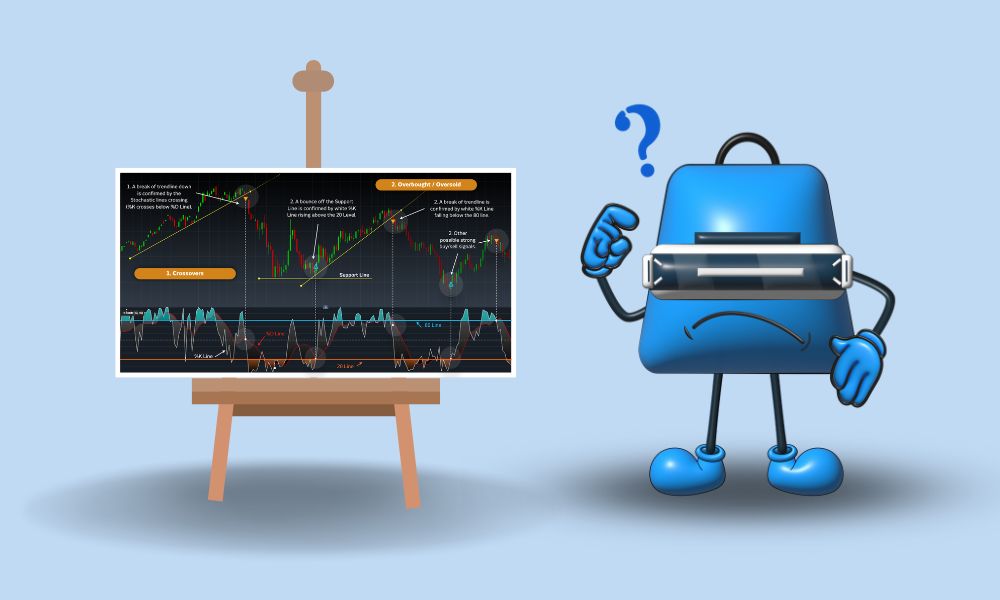
Technically speaking, Tushar Chande and Stanley Kroll created the Stochastic Relative Strength Index (RSI), an indicator.
It is more frequently known by its abbreviation, StochRSI. This relatively well-known indicator is made up of two parts: the Stochastic Oscillator (SO) and the Relative Strength Index (RSI).
One of the most popular ways to use the stochastic relative strength index (StochRSI) when creating a trading strategy is to look for readings that fall between the overbought and oversold ranges.
Readings below 0.2 are regarded as oversold, and readings above 0.8 are regarded as overbought market conditions.
The StochRSI has a scale of 0 to 1, with 0 serving as its midpoint.
Readings that show an overbought condition during a larger downtrend are interpreted as bearish signals, whereas readings that show an oversold condition during a larger uptrend are interpreted as bullish signals.
However, the stochastic relative strength index's extreme volatility necessitates extreme caution.
Trade entries should not be made following an overbought or oversold reading until the subsequent price action has confirmed the move.
For instance, readings that point to an asset being overbought should not be interpreted as an entry signal but rather as a caution about a potential move.
The StochRSI indicator needs to move back below the 0.5 centerlines in order to show that the bearish trend is still present.
A larger bullish trend must develop before the stochastic RSI can rise above 0.5 following oversold readings.
A trend change may be imminent if the stochastic RSI readings stay in the oversold or overbought zones for an extended period of time.
Suppose a particular security has been moving down sharply for a number of weeks, with RSI readings fluctuating between 18 and 60.
The RSI is showing a reading of 56 for the current session.
This RSI reading, which is typically not regarded as an actionable indicator, paints a different picture according to the StochRSI calculation than the traditional interpretation.
The StochRSI value for this session is (56 - 18) / (60 - 18), which is equal to 0.9.
The price is likely to keep falling after the bullish correction is finished due to the significant overbought signal that developed within the larger downward trend.
Use market or limit orders to start a short position as soon as the StochRSI drops below 0.5, depending on which approach you prefer.
At the point where the bullish retrace made its highest high, a stop-loss order can be placed.
The bulls already tried to move the price past this level once, but they were unsuccessful. If the price rises above this level, it might be the end of the bearish trend.
The stochastic relative strength index (StochRSI) generates a large number of signals, both positive and negative, so it is wise to search for additional indicators that corroborate the continuation of a trend.
When the persistently high volume and candlestick patterns, such as the falling three methods, are present, StochRSI signals are amplified.